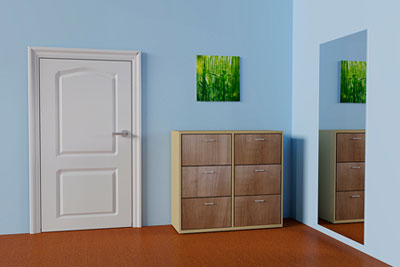Color selection in the room design
 Without sunlight there would be no life and no colors.
Without
Without sunlight there would be no life and no colors.
Without
Murals are the quickest and most effective way to bring popular color into your apartment or house.
Whether in the bedroom or in the kitchen - with a cleverly selected mural you can emphasize the
-
support (e.g. complete children's room including murals in different shades of pink) -
add (e.g. living room in light blue, mural in fresh green) -
or create a
contrast and set a strong accent. It would be ideal if another element in the room had the same color (e.g. bedroom in white, mural and ceiling on the bed in blue)
Color division: short and sweet
A color is the property of an object to selectively reflect the sun's rays. There are many classifications according to which colors are divided. Basically, these are divided into colorful - achromatic, warm - cold, gloomy - saturated.
- Colorful / achromatic.
Thechromatic colors include all visible colors of the color wheel - so-called primary colorsred ,blue ,yellow and mixed colors orange, green, violet and also Brown. Theachromatic colors, also called neutral, arewhite ,black and all shades ofGray . - Warm cold.
Thewarm colors are:red ,orange ,Yellow ,Brown and its shades.
Thecold colors includegreen ,blue ,violet and also its shades. - Saturated / gloomy.
Basically, the colors aresaturated . If black is mixed in, you getdark shades.